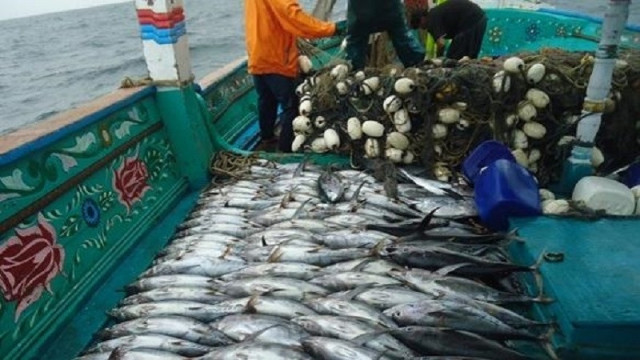Switch in fishing methods saves thousands of dolphins
New fishing technique has drastically cut down entanglement, deaths of endangered species

In 2013, at least 12,000 dolphins were killed in Pakistani territorial waters in the Arabian Sea, caught in the massive nets cast by fishermen.
Those gill nets, locally known as “bither,” were notorious for their high level of bycatch.
Pakistan’s territorial waters are home to 25 kinds of dolphins, notably spinner, bottlenose and tropical dolphins – and these endangered creatures were falling prey to the nets in massive numbers.
In just five years, however, the number of dolphins killed had plunged exponentially to a mere 186.
Behind that drastic reduction was a small but crucial shift from that conventional fishing method – subsurface gill nets instead of the surface ones.
As part of a pioneering project launched in 2012, over 700 local fishermen were trained to use the other type of nets, and the results of the change become evident over time, Mohammad Moazzam Khan, technical adviser for WWF-Pakistan, told Anadolu.
Since 2018, according to Khan, who headed the project, deaths of dolphins due to entanglements have become “extremely rare, if not zero.”
“There were no previous estimates or studies. It was believed that dolphins were being killed by these fishing nets, but there were no counts made until 2012,” he said.
However, despite the massive difference with the shift in fishing methods, dolphins are still considered an endangered species, as some 100,000 are still killed annually in the Indian Ocean alone, Khan added.
More catch, less bycatch
The subsurface net, locally known as “tilo,” is placed 2 metres (6.5 feet) underwater, as opposed to the traditional gill net, a popular fishing method used to catch tuna and similar fish, especially by small-scale fisheries in coastal states of the Indian Ocean.
They are also comparatively hassle-free, with much lower chances of waste and a quicker process overall.
“The use of subsurface nets proved to be a great success,” said Khan.
“It not only reduced the entanglement of dolphins and other non-target species, but also substantially increased the catch of target species, including yellowfin and skipjack tunas.”
The bycatch of the traditional nets predominantly included cetaceans, creatures belonging to the family of whales or dolphins, and sea turtles, according to a WWF-Pakistan report.
Before the switch, an estimated figure of more than 12,000 cetaceans and 29,000 sea turtles used to be annually entangled in gill nets, the report said.
Read also: Protect our dolphins
The subsurface nets have reduced the catch of some species of high monetary value such as billfish and dolphinfish. However, fishermen say they are able to make up for the loss because of the increased catch of target species like yellowfin, longtail and skipjack tunas.
“Apart from more catch of tunas, the time being saved is another crucial benefit,” Agha Mohammad Iqrar, a fisherman from Karachi, told Anadolu.
Iqrar, who started using subsurface nets six years ago, said he just has to arrange an extra piece of rope to convert the traditional gill net into a subsurface net, which costs him a mere 5,000 Pakistani rupees ($16).
“Previously, we spent a lot of time to free the non-target catches, mostly dolphins, which would also damage our nets,” he said.
“I haven’t seen a dolphin entangled lately,” added Iqrar, who just returned from a weeklong fishing trip.
Entanglement of cetaceans is very rare nowadays, thanks to the new method, and even if they do get caught in the net their chances of survival are much higher, he said.



















COMMENTS
Comments are moderated and generally will be posted if they are on-topic and not abusive.
For more information, please see our Comments FAQ